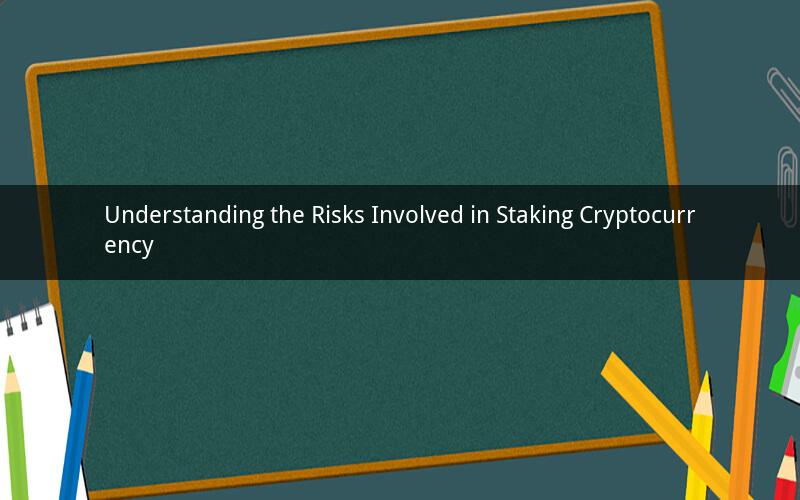
In the ever-evolving world of cryptocurrencies, staking has emerged as a popular way for investors to earn rewards by locking up their coins. However, like any investment, there are risks involved. This article delves into the potential risks associated with staking crypto, helping you make informed decisions about your investment strategy.
1. Volatility Risk
One of the most significant risks of staking crypto is its volatility. Cryptocurrency prices can fluctuate dramatically, and this can have a direct impact on the value of your staked assets. If the market takes a downturn, the value of your staked coins could decrease, potentially leading to a loss in the short term.
Question: How can I mitigate the impact of price volatility on my staked crypto?
Answer: To mitigate the impact of price volatility, you can diversify your portfolio by staking different types of cryptocurrencies. This way, if one asset's value plummets, another may rise, balancing out your overall portfolio's risk.
2. Security Risks
Staking involves entrusting your private keys to a third-party wallet or platform. This can pose security risks, as there is always a chance of hacks, phishing attacks, or other forms of cybercrime. If your private keys are compromised, an attacker could gain access to your staked coins and potentially steal them.
Question: What measures can I take to ensure the security of my staked crypto?
Answer: To ensure the security of your staked crypto, you should use reputable wallets and platforms that implement strong security measures, such as two-factor authentication, cold storage, and regular security audits. Additionally, keep your private keys secure and avoid sharing them with others.
3. Centralization Risk
Some blockchain networks may face centralization risks due to the concentration of staked coins with a few large players. This concentration can lead to reduced decentralization, as the more coins are staked, the greater the influence of these large players becomes.
Question: How can centralization impact the staking process?
Answer: Centralization can lead to potential manipulation of the network's consensus mechanism, affecting the fairness of the staking process. This may result in lower rewards for smaller stakers or even the potential for a network to be taken over by a single entity.
4. Platform-Specific Risks
Different platforms offer staking services with varying levels of risk. Some platforms may have high fees, poor liquidity, or a lack of transparency, which can make it challenging to withdraw your staked assets when you need them.
Question: What should I consider when choosing a staking platform?
Answer: When choosing a staking platform, consider factors such as fees, liquidity, transparency, and the overall reputation of the platform. Look for platforms with a strong track record and a commitment to security, as well as those that offer competitive rewards and easy withdrawal processes.
5. Regulatory Risks
As the regulatory landscape continues to evolve, there is always a risk that new regulations could impact the staking process. This could include restrictions on certain cryptocurrencies, changes to tax laws, or even the outright banning of staking in some jurisdictions.
Question: How can I stay informed about regulatory changes that may affect my staked crypto?
Answer: To stay informed about regulatory changes, follow news sources and regulatory agencies in your jurisdiction. This will help you understand any potential impacts on your staked crypto and take appropriate actions to mitigate risks.
In conclusion, staking crypto can be a rewarding investment strategy, but it is crucial to understand the risks involved. By diversifying your portfolio, choosing secure platforms, and staying informed about regulatory changes, you can reduce the potential impact of these risks and make more informed investment decisions.